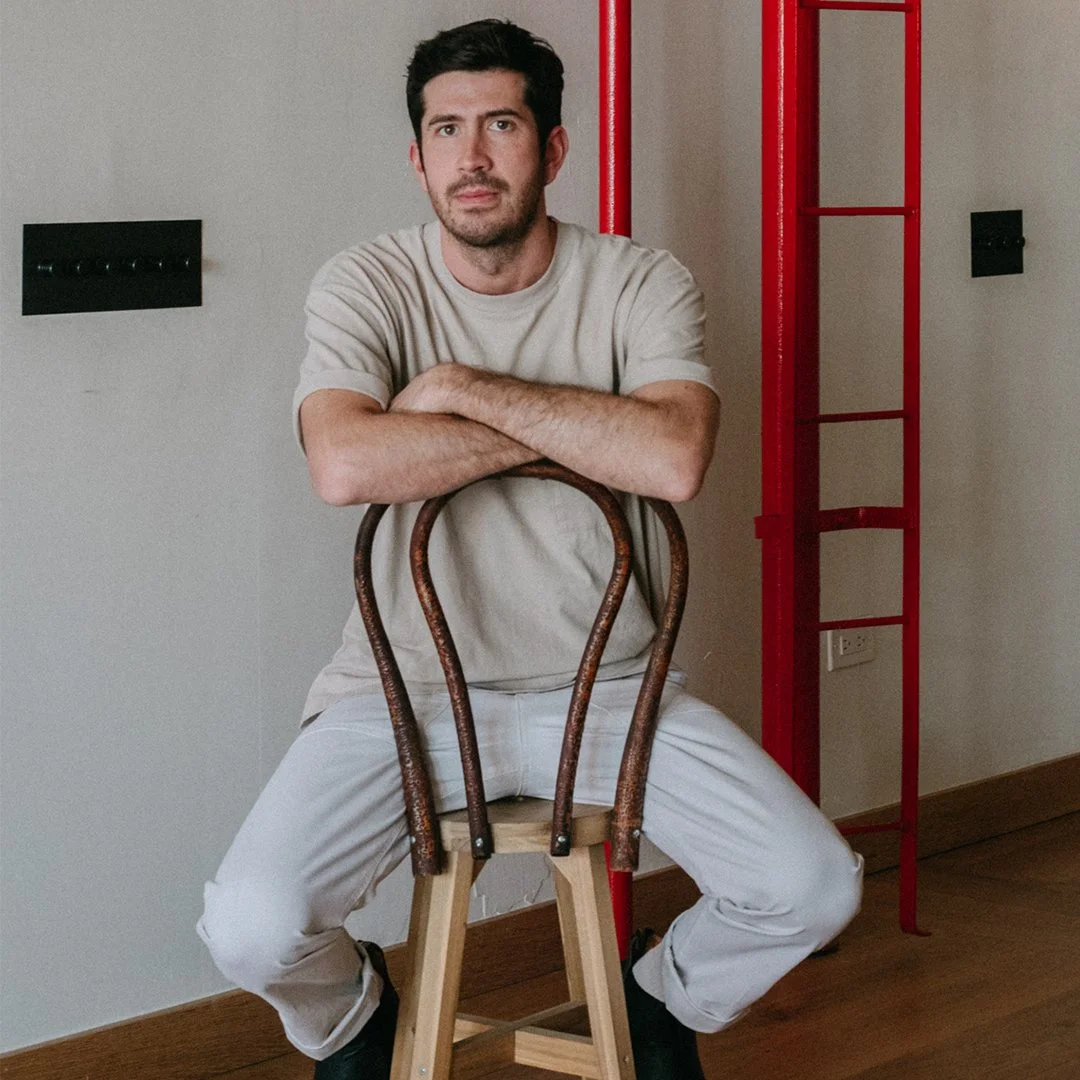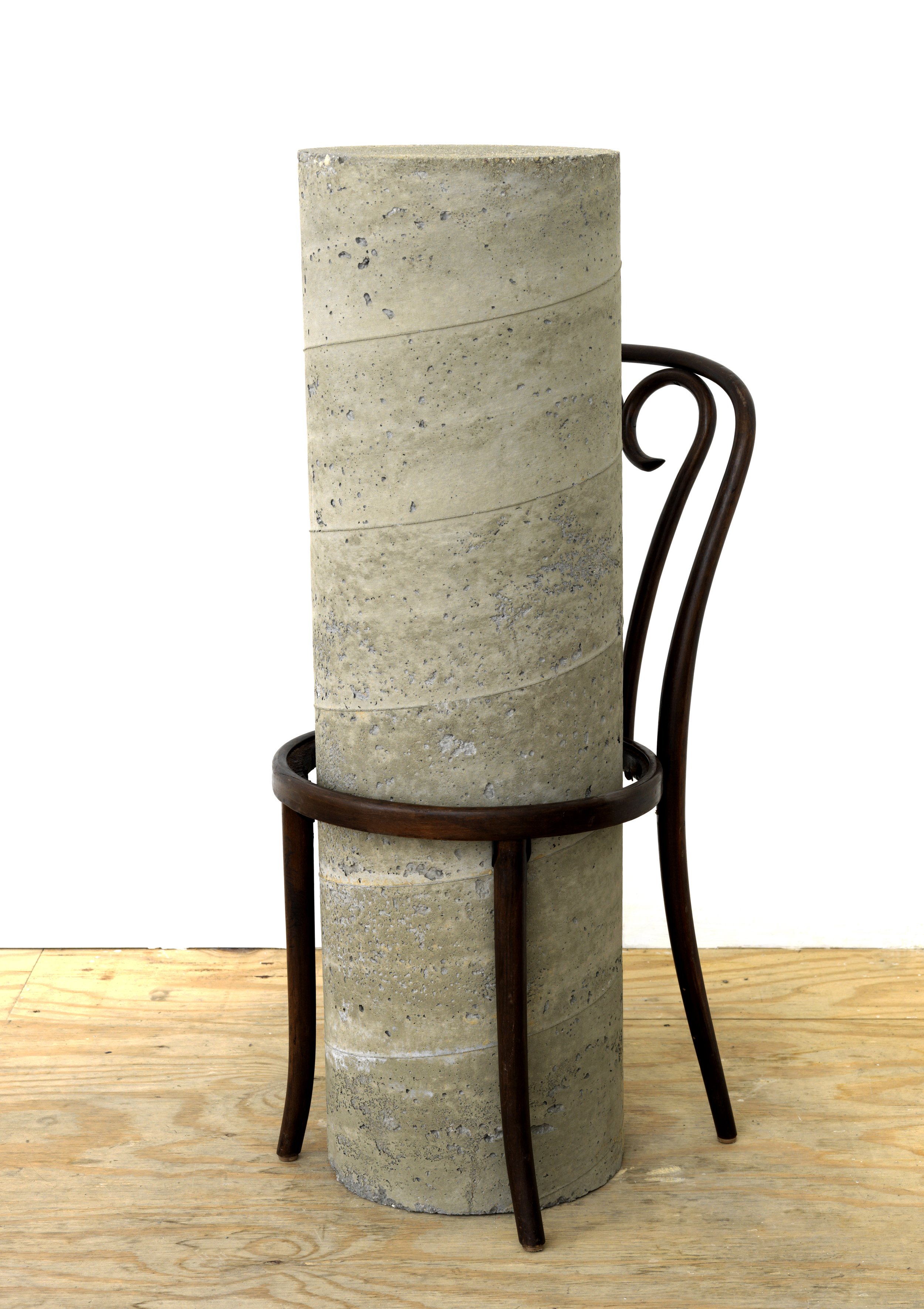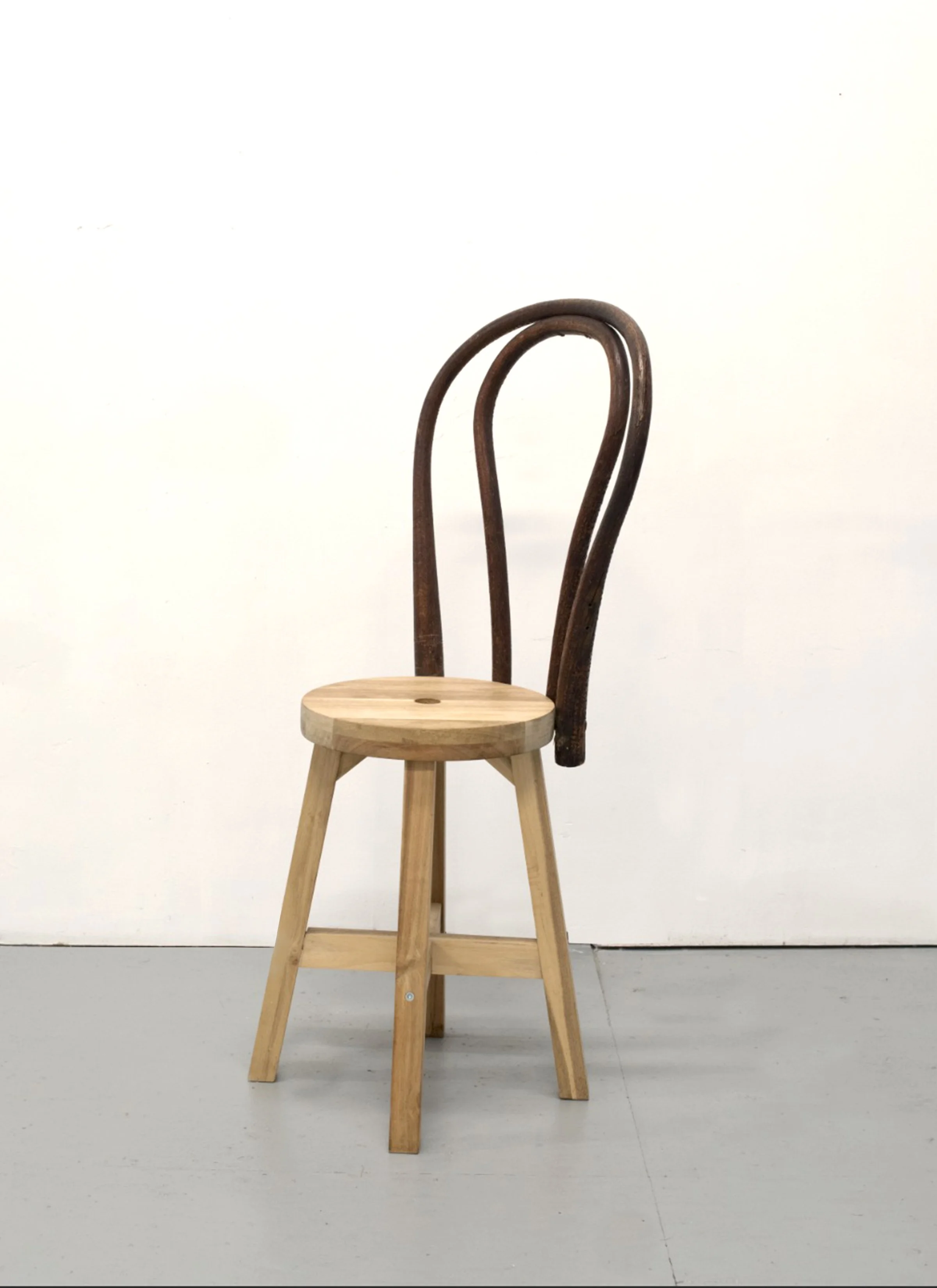Mario Navarro
Mario Navarro (b. 1984, Mexico) is a Mexican artist based in New York City. Issues of perception and matter/materials and their representations are lines of research Navarro has investigated. The relations between architectures and forms, and more specifically, the decomposition of architectural paradigms (balance, symmetry, organization of units and the figure of the architect) are of constant interest and are explored in his practice. In the process of appropriating or interpreting the legacy of modern architecture, Navarro often includes fictional variables where things unlikely to happen are manifested in front of the viewer. Examples of this are images of emblematic buildings years after these were eroded by its surroundings, or hardwood floor planks that levitate for a seemingly unknown reason. His research focuses on specific architects and designers like Le Corbusier, Luis Barragán or Michael Thonet, and how their heritage has been digested in popular culture outside of specialized circles. Hence, Navarro wonders about the effects of assimilation, decay and other forms of consumption. He has been a recipient of different residency programs including Pioneer Works, Brooklyn (2018) and Casa Wabi, Oaxaca, Mexico (2020). Selected exhibitions include “Almost Solid Light”, Kasmin Gallery, New York (2018); “Monumentos, anti- monumentos y nueva escultura pública“, Museo El Chopo, Mexico City (2018); “A Landscape of Events”; SCAD Museum of Art, Savannah, GA (2017); “Veil/Unveil” Proyecto Paralelo, Mexico City (2017) ""Aesthetical Irregularities"", Komagome SOKO, Tokyo, Japan (2016) and “Forms of otherness”, International Studio and Curatorial Program (ISCP), Brooklyn (2015)."
The installation for the Sugar Hill Museum is composed by a set of sculptures that are part of an ongoing series exploring the deconstruction of the iconic Thonet Chair. This specific chair represents one of the first approaches to modernist design and inspired many architects and Designers from movements like Bauhaus. Once this chair became iconic due to the particularities of its time: easy to disassemble and assemble, could be shipped anywhere and its aesthetics. Through the passing of time, its positive particularities became a burden since the chair was replicated by other fabricators globally.
In the process of appropriating or interpreting the legacy of modernism through design, I’m interested in transforming an object that has become part of the modern heritage and has been digested in popular culture outside of specialized circles. Hence, I wonder about the effects of assimilation, decay and other forms of consumption. One of the sculptures replicates the back of the original chair creating a mirror effect, or one more which contains a concrete column inserted in the middle of the seating area. These are just a couple of examples for the proposals, where the results or propositions become some kind of Neo-arte Povera where the chair’s functionality is suppressed becoming simply a sculptural object.




